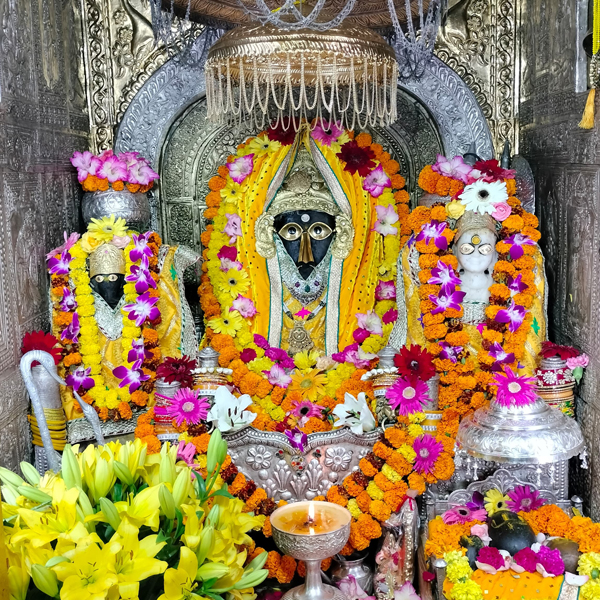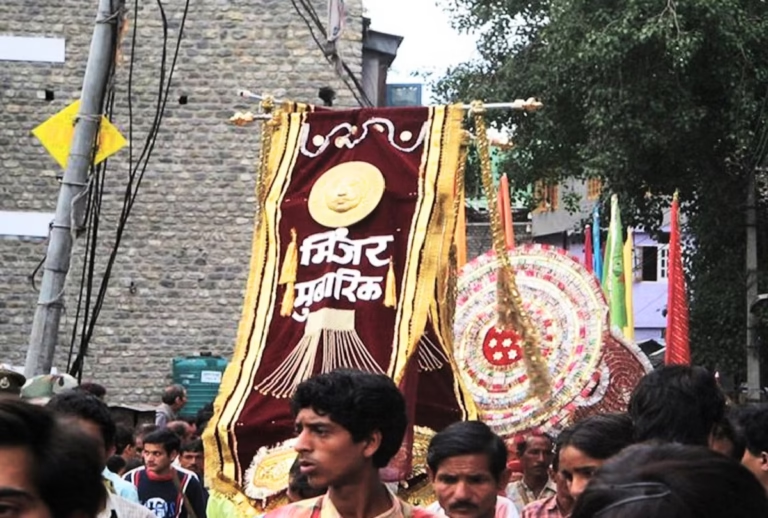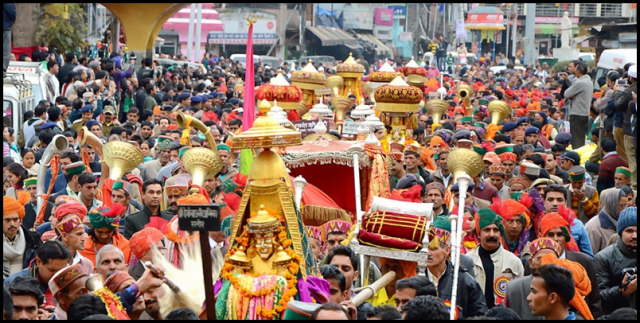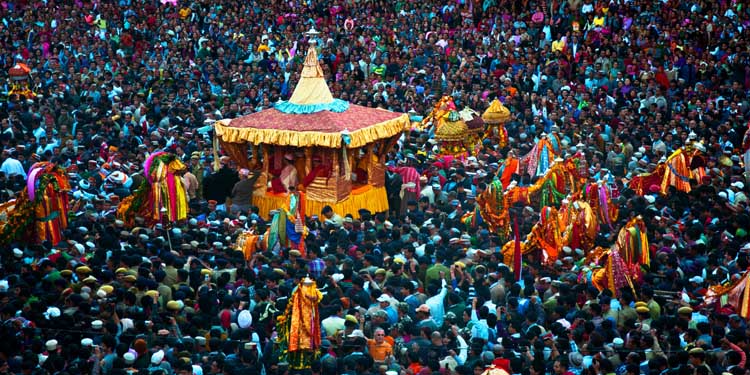Located in the serene hills of Bankhandi village in the Kangra district of Himachal Pradesh, the Baglamukhi Temple is one of the most powerful and revered Shakti Peethas in North India. Dedicated to Goddess Baglamukhi, the eighth Mahavidya among the ten Mahavidyas in Hinduism, this temple is a center of intense devotion, spiritual rituals, and tantric practices. Unlike other popular temples that attract general devotees, Baglamukhi Temple is particularly known among those who seek divine protection, victory in legal matters, and success over adversaries.
The temple is believed to have immense tantric energy and is often visited by spiritual seekers and practitioners. People believe that praying at this temple helps one gain control over enemies, remove obstacles, and achieve mental peace. The temple holds an especially significant place in the hearts of devotees during times of personal struggle and legal battles.
Origin of the Goddess Baglamukhi
The legend of Goddess Baglamukhi traces back to a time when a severe storm once threatened to destroy the universe. All gods went to Lord Vishnu for help, and he in turn prayed to the Supreme Mother Goddess. From the still waters of the cosmic lake, the golden-hued goddess Baglamukhi emerged and calmed the storm with her immense power. The name Baglamukhi is derived from “Bagla” which is a distortion of the word “Valga,” meaning bridle, and “Mukhi,” meaning face or mouth. Hence, she is the goddess who has the power to control, immobilize, or silence her enemies.
According to another belief, Goddess Baglamukhi emerged to destroy the demon Madan, who had gained the power to kill anyone just by speaking. To neutralize his powers, the goddess paralyzed his speech and eventually defeated him.
Historical Significance and Construction
The present temple structure in Bankhandi is believed to have been built in ancient times, although exact historical records of its construction are not available. It is considered that the temple was renovated over centuries by local kings and devotees. The architectural style of the temple reflects traditional North Indian design, with beautifully carved pillars, domes, and intricate motifs depicting divine symbols.
The temple is simple yet powerful in appearance. It is built with yellow-painted walls, symbolizing the color of the goddess. Yellow is believed to be the favorite color of Goddess Baglamukhi and holds spiritual significance, representing knowledge, wisdom, and prosperity. Many devotees wear yellow clothes and offer yellow sweets and flowers to the goddess.
Spiritual and Religious Importance
The Baglamukhi Temple is known not just for its devotional significance but also for its deep connection with Tantric rituals. It is believed that prayers offered at this temple with sincere heart and faith help overcome enemies, win legal battles, and remove malefic effects of planets. Devotees from different parts of India, especially from legal, political, and business backgrounds, come to the temple seeking divine intervention.
Baglamukhi Sadhna, or spiritual practice, is performed by experienced tantriks and sadhaks at this temple. These rituals are often conducted during special astrological alignments or nights like Navratri and Amavasya. It is said that the mantras of Baglamukhi have the power to arrest negativity, paralyze evil forces, and bring desired results when chanted with devotion.

Worship Practices and Rituals
Worship at the temple begins early in the morning with traditional Aarti and chanting of Baglamukhi mantras. The temple priest performs daily rituals including abhishekam (ritual bathing), offering of yellow flowers, sweets, turmeric, and gram pulses. Devotees also offer coconut and yellow cloth to the goddess.
A special puja known as “Baglamukhi Anushthan” is also performed for those facing serious legal issues or spiritual disturbances. During this puja, the devotees are required to follow strict rituals under the guidance of temple priests or tantriks. The temple is especially crowded on Thursdays, which is considered auspicious for Goddess Baglamukhi.
Many pilgrims perform circumambulation around the temple, chant her stotra and kavach, and meditate upon her form to receive her blessings. It is advised to maintain a calm and respectful environment while inside the temple, due to the strong spiritual energy present in the sanctum.
Festivals Celebrated at Baglamukhi Temple
The major festival celebrated at the temple is Navratri. Both Chaitra (spring) and Ashwin (autumn) Navratris are marked with great enthusiasm. Devotees from across the country visit during these nine nights to participate in special havans, yagya, and long meditation sessions.
During Navratri, the temple is decorated with yellow flowers and lights. Special spiritual discourses and community meals (langars) are also organized. It is believed that during these nine nights, the energy of the goddess is at its peak and praying at the temple during this period brings manifold blessings.
Apart from Navratri, Baglamukhi Jayanti and Guru Purnima are also celebrated with great reverence. These occasions witness huge gatherings of saints, tantriks, and common devotees who come together to pay homage to the goddess.
How to Reach Baglamukhi Temple
Baglamukhi Temple is located in Bankhandi village in the Kangra district of Himachal Pradesh. It is easily accessible by road. The nearest town is Jwalamukhi, which is about 5 kilometers away. From Kangra, the temple is around 40 kilometers, and from Dharamshala, it is about 55 kilometers.
The nearest railway station is Kangra Mandir, and the nearest airport is Gaggal Airport (Dharamshala), which is well connected to major cities like Delhi and Chandigarh. Taxis and buses are available from nearby towns to reach the temple. The road journey to the temple offers a beautiful view of the green hills and countryside of Himachal Pradesh.
Conclusion
The Baglamukhi Temple in Himachal Pradesh is not just a religious site but a powerful center of spiritual energy. It holds a unique position among the Shakti temples due to its tantric associations and the goddess’s distinctive powers. Whether a devotee is looking for divine protection, spiritual strength, or inner peace, the temple offers a space of powerful worship rooted in age-old traditions.
Those who visit this temple often speak of a strange stillness and inner calm they experience in its presence. It is a place where faith merges with power, and silence becomes the ultimate strength. The story of Baglamukhi continues to attract not only devotees but seekers who want to walk the mysterious path of divine silence and victory.




